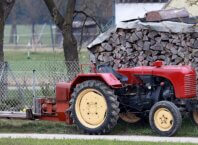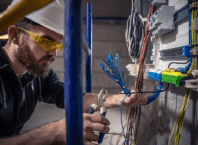Ever dreamed of turning those leather scraps in your garage into a thriving business? Wondering if your weekend hobby could actually pay the bills? What if I told you that starting a leathercraft business might be easier than you think?
The world of leather crafting offers a brilliant opportunity for creative entrepreneurs looking to build something tangible with their hands. Whether you’re already dabbling in leather work or simply fascinated by the craft, this guide will walk you through everything you need to know about launching your own leathercraft business. From sourcing wholesale supplies to mastering marketing strategies that work, we’ll cover the essential steps to transform your passion into profit.
Understanding the Leather Manufacturing Industry

The leather industry in Australia represents a fascinating blend of traditional craftsmanship and modern business opportunities. With consumers increasingly valuing handmade, sustainable products, there’s never been a better time to enter this market. The industry encompasses everything from small artisan workshops to larger manufacturing operations, each serving different market segments.
What sets successful leather businesses apart is their understanding of market dynamics. Today’s customers want more than just a product – they’re looking for stories, sustainability, and authenticity. This shift has created incredible opportunities for small-scale manufacturers who can offer personalised service and unique designs that mass producers simply can’t match.
What Does Starting a Leather Business Actually Involve?
Starting a leather business involves much more than simply knowing how to cut and stitch leather. You’ll need to master multiple skills, from sourcing materials to managing finances. The good news? You don’t need to be perfect at everything from day one.
At its core, learning how to start leather manufacturing industry operations means understanding three key areas: production, business management, and customer relations. Production covers everything from designing patterns to finishing techniques. Business management includes pricing, inventory control, and financial planning. Customer relations encompass marketing, sales, and after-sales service.
Essential First Steps: How to Start Leather Manufacturing Industry
Before diving into production, you need to lay solid foundations for your business. Start by researching your local market thoroughly. Visit craft fairs, browse online marketplaces, and check out established leather goods stores. What products are selling well? What gaps exist in the market? This research will inform every decision you make moving forward.
Next, create a basic business plan. It doesn’t need to be a 50-page document – even a simple outline covering your target market, product range, and financial projections will help clarify your thinking. Consider questions like: How much startup capital do you need? What equipment is essential versus nice-to-have? Where will you work from initially?
Choosing Your Leathercraft Niche
Finding your niche is perhaps the most critical decision you’ll make early on. The leather goods market is vast, ranging from practical items like wallets and belts to artistic pieces like carved artwork. Your niche should align with your skills, interests, and market demand.
Consider specialising in areas where you can add unique value. Perhaps you’re drawn to motorcycle accessories, pet products, or bespoke handbags. Maybe you want to focus on corporate gifts or wedding accessories. The key is choosing something you’re genuinely passionate about – you’ll be spending countless hours perfecting your craft, so enjoyment matters.
Sourcing Wholesale Leather Craft Supplies
Quality materials form the foundation of any successful leather business. Finding reliable Wholesale Leather Craft Supplies can significantly impact your profit margins and product quality. Start by understanding different leather types, grades, and tanning methods. This knowledge helps you make informed purchasing decisions and educate your customers.
Building relationships with suppliers takes time but pays dividends. Don’t just focus on price – consider factors like consistency, minimum order quantities, payment terms, and delivery reliability. Many suppliers offer better prices and terms to established customers, so loyalty can literally pay off.
Finding Reliable Australian Suppliers
Australian leather suppliers offer several advantages for local businesses. Shorter delivery times, easier communication, and the ability to inspect materials in person make domestic sourcing attractive. Major cities like Melbourne and Sydney host several established leather merchants catering to both hobbyists and professionals.
Start your search by joining Australian leathercraft communities online and asking for recommendations. Visit suppliers in person if possible – touching and examining leather firsthand helps you understand quality differences. Many suppliers offer sample packs, which are worth the investment when starting out.
Pricing Your Leather Products for Profit
Pricing handmade leather goods challenges many new business owners. You need to cover materials, time, overheads, and profit while remaining competitive. Start by calculating your true costs, including often-forgotten elements like packaging, transaction fees, and tool replacement.
Many craftspeople undervalue their time initially. Track how long each product takes to make, from cutting to finishing. Include design time, photography, and customer communication. Your hourly rate should reflect your skill level and allow for a sustainable lifestyle.
Understanding Cost Structures
Your cost structure extends beyond leather and thread. Fixed costs include workshop rent, insurance, and equipment depreciation. Variable costs change with production volume – materials, packaging, and shipping. Understanding this distinction helps you make better business decisions.
Create a simple spreadsheet tracking all expenses. This might seem tedious initially, but it becomes invaluable for pricing decisions and tax preparation. Include a buffer for unexpected costs – leather prices can fluctuate, and tools need replacing.
Scaling Your Leather Manufacturing Business

Scaling a leather business requires careful planning and timing. Rushing to grow too quickly can compromise quality and overwhelm your resources. Start by systemising your current operations – document your processes, create templates, and establish quality standards.
Consider which aspects of growth make sense for your business model. This might mean increasing production capacity, expanding your product range, or entering new markets. Each path requires different resources and strategies. Many successful businesses grow by deepening their presence in existing markets before expanding geographically.
From Side Hustle to Full-Time Business
Transitioning from part-time to full-time leather crafting is a major milestone. Financial preparation is crucial – ideally, save enough to cover six months of living expenses before making the leap. This buffer reduces stress and allows you to focus on growing the business.
Build your customer base and refine your systems while still employed. Use evenings and weekends to test whether you can maintain consistent quality and delivery times under pressure. This period also helps you understand seasonal fluctuations in demand.
Your Roadmap to Leathercraft Success
Starting a leathercraft business combines creative fulfilment with entrepreneurial challenge. We’ve explored the essential elements – from understanding the industry and choosing your niche to mastering marketing and managing growth. Each step builds upon the previous, creating a solid foundation for long-term success.
Remember that every successful leather business started with someone taking that first step. Whether you’re drawn to creating bespoke handbags or rugged outdoor gear, the principles remain the same: quality materials, thoughtful design, smart business practices, and genuine customer care. The combination of traditional craft skills with modern business approaches creates exciting opportunities.







